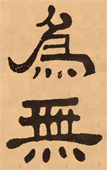By Bernie Clark, July 13th, 2014
Blaise Pascal [1]
When there is nothing to do, then you do nothing!
Ajahn Brahm [2]
 It sounds so simple: stop, do nothing, let go. But if it is so simple – why is it so hard? Why is it a struggle to not do something, to just let things be? Why is it so hard to not think about that drama occurring in my life, to let go of the stress of my job or relationship problems? Probably because letting go is not valued in our culture, and what is not valued is not practiced. It does take practice to learn how to let go and let things be. Letting go is a very yin-like quality.
It sounds so simple: stop, do nothing, let go. But if it is so simple – why is it so hard? Why is it a struggle to not do something, to just let things be? Why is it so hard to not think about that drama occurring in my life, to let go of the stress of my job or relationship problems? Probably because letting go is not valued in our culture, and what is not valued is not practiced. It does take practice to learn how to let go and let things be. Letting go is a very yin-like quality.
Ajahn Brahm is an entertaining and provocative monk. He was trained in the Forest Tradition of Buddhism in Thailand, originally hailed from England, but now is the abbot of a monastery outside of Perth in Australia. He has a number of specific stories that show both the importance of letting go, and the challenge to doing just that.
The Forest Tradition of Buddhism in Thailand involves, not surprisingly, spending a lot of time alone in the forest, supposedly meditating. The philosophy and practice is one of returning to the very earliest teachings of the Buddha. But one year, during Brahm’s sixth yearly retreat, he found that he could not focus his mind at all: thoughts of sex and violence assaulted him. (Yes, monks are susceptible to these thoughts just like us.) In desperation he made a deal with his unruly mind: “If you just let me concentrate, then once a day at 3pm for one hour, I will let you think about anything you want.” The deal was a disaster: his mind continued to wander, but holding up his end of the bargain, at 3pm he allowed his mind to go wherever it wanted to go. It was during that hour that Brahm’s mind was completely still and at ease. He discovered that the act of trying to let go of thoughts was counterproductive. One cannot try to let go; one needs only let go.
One morning in the monastery there was a commotion: a farmer had been leading his water buffalo to graze in the paddy fields and had tied a rope around the animal. The buffalo got spooked and started to run, but the farmer held tight to the rope. The buffalo was much stronger than the farmer; the rope became entangled, dragging the farmer. His finger was severed by the pulling rope and he sought medical aid from the monastery. The obvious lesson for everyone that morning was – when your water buffalo is on a rampage, let it go! You cannot stop a rampaging buffalo, so the wisest course is to get out of the way. After a while, the buffalo will stop running and then you can calmly walk after it, pick up the rope and lead it again. But don’t try this while it is out of control: let go.
As Brahm points out, we all have rampaging water buffalos in our lives from time to time: our son, partner, mother, boss, customers – when they are raging out of fear or anger, the wisest action is to do nothing. Let them come to a stop, and then deal with the drama. We also have water buffalos in our mind: the raging thoughts that won’t stop – don’t try to stop them when they are raging: wait for the moment of calm and then go pick up the rope and lead them skillfully.
 The Daoists have a name for this: wu-wei. Wu-wei is non-doing. Action through inaction. The Dao De Ching suggests, “Through nonaction nothing is left undone.” [3] It recommends following the path of least resistance: “Act without action; work without effort, taste without savoring.” [4] Consider your own breath: it is easy to exhale, to let go of the breath. It is the yang-portion of the breath, the inhalation, that requires effort, but exhaling is simply relaxing the muscles of inspiration. We let go of the breath and it leaves us. We don’t have to try to exhale: we allow it to happen.
The Daoists have a name for this: wu-wei. Wu-wei is non-doing. Action through inaction. The Dao De Ching suggests, “Through nonaction nothing is left undone.” [3] It recommends following the path of least resistance: “Act without action; work without effort, taste without savoring.” [4] Consider your own breath: it is easy to exhale, to let go of the breath. It is the yang-portion of the breath, the inhalation, that requires effort, but exhaling is simply relaxing the muscles of inspiration. We let go of the breath and it leaves us. We don’t have to try to exhale: we allow it to happen.
Ajahn Brahm’s own teacher had an illustrative example: he would hold up a cup and ask his monks, “how heavy is this cup?” Before they could answer, he would continue, “at first it is very light, but after ten minutes of holding it up it begins to be heavier. Imagine how it would feel after one hour of holding?” The obvious answer is – quite heavy. Now, what is the wise thing to do if something is getting very heavy, too heavy to continue to hold up? The wise thing is to set it down for a little while. Then, after a short rest, you can pick it up again, and it is once more quite light and easy to bear. [5] So simple; so obvious.
And yet, how many burdens are you carrying at this time? When the stress of life, obligations and responsibilities, become really heavy, are you wise enough to set them down for a little while and take a rest? Or do you believe that you must keep struggling and keep your arm up forever? Stress takes a heavy toll in our lives: it creates illness and exacerbates disease. It poisons relationships and ages us prematurely. There is a simple antidote: set down your burden! Not forever; not even for long: even a short rest from your responsibilities, a brief letting go, may help you pick them up again and bear them more strongly, more appropriately.
There is a simple letting go exercise that we can do while practicing yoga: this is ALL you need to know.
- Allow
- Label
- Let go
Allow means to allow whatever is to be: allow your thoughts to come into your mind. Allow the sensation of the postures to be. [6]
Label the thought or sensation. This is not a judgement; the sensation or thought is not good or bad – simply note what it is. After noticing it, –
Let it go. Like an exhale, don’t hang on – release. Now repeat. This is a meditation: meditation is the key skill for learning to let go.
This is A.L.L. you need to practice. Allow – Label – Let go. You have so many opportunities every day to let go. The more you practice letting go, the easier it will become. The easier it becomes, the more you will do it. Use the time in your yoga practice to help establish this valuable skill. Learn to let go and see how much you gain.
Footnotes:
- — Quoted in Des MacHale, Wisdom (2002).
- — Quotation from Mindfulness, Bliss and Beyond by Ajahn Brahm, (2006) page 263.
- — Dao de ching: 48
- — Dao de ching: 63
- — See Mindfulness, Bliss and Beyond by Ajahn Brahm, (2006) page 266.
- — With the sole exception being – if you are too deep in the pose, if you are experiencing pain, it is wiser to back off or back out of the pose.
